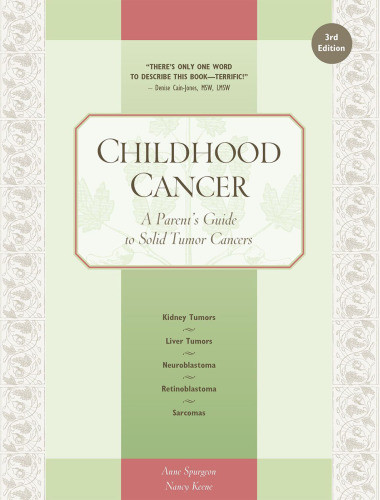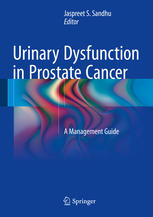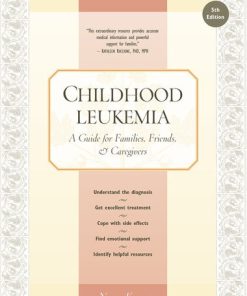Childhood Cancer A Parent Guide to Solid Tumor Cancers 1st Edition by Anne Spurgeon, Nancy Keene ISBN 1941089933 9781941089934
$50.00 Original price was: $50.00.$25.00Current price is: $25.00.
Childhood Cancer A Parent’s Guide to Solid Tumor Cancers 1st Edition by Anne Spurgeon, Nancy Keene – Ebook PDF Instant Download/Delivery: 1941089933, 9781941089934
Full download Childhood Cancer A Parent’s Guide to Solid Tumor Cancers 1st Edition after payment

Product details:
ISBN 10: 1941089933
ISBN 13: 9781941089934
Author: Anne Spurgeon, Nancy Keene
Each year more than 6,000 children and teens in the United States are diagnosed with a solid tumor (e.g., kidney tumor, liver tumor, neuroblastoma, retinoblastoma, or sarcoma). The illnesses and their treatments can have devastating effects on family, friends, schoolmates, and the larger community. This newly updated edition contains essential information families need during this difficult time. It includes descriptions of the newest treatments, such as computer-assisted surgery, tandem stem cell transplants, and targeted therapies as well as practical advice about how to cope with diagnosis, medical procedures, hospitalization, school, and finances. Woven throughout the text are true stories–practical, poignant, moving, funny–from more than 100 children with cancer, their siblings, and their parents.
Childhood Cancer A Parent’s Guide to Solid Tumor Cancers 1st Table of contents:
1. Diagnosis
Signs and symptoms
Where should your child receive treatment?
Physical responses
Emotional responses
The immediate future
2. Bone Sarcomas
The skeletal system
Osteosarcoma
Ewing sarcoma family of tumors
Information on standard treatments
3. Liver Cancers
The liver
Signs and symptoms
Diagnosis
Hepatoblastoma
Hepatocellular carcinoma
Undifferentiated embryonal sarcoma
Choriocarcinoma of the liver
Liver transplantation
Information on standard treatments
4. Neuroblastoma
The sympathetic nervous system
The adrenal glands
Who gets neuroblastoma?
Signs and symptoms
Diagnosis
Staging
Prognosis
Treatment
Information on standard treatments
Newer treatment approaches
5. Retinoblastoma
The eye
Who gets retinoblastoma?
Signs and symptoms
Diagnosis and staging
Prognosis
Treatment
Information on standard treatments
6. Soft Tissue Sarcomas
Muscles and connective tissues
Signs and symptoms
Diagnosis of soft tissue sarcomas
Rhabdomyosarcoma
Non-rhabdomyosarcoma soft tissue sarcomas
Information on standard treatments
7. Kidney Tumors
The kidneys
Signs and symptoms of kidney tumors
Wilms tumor
Other types of childhood kidney cancers
Information on standard treatments
8. Telling Your Child and Others
Telling your child
Telling the siblings….
Notifying the family
Notifying friends and neighbors
Notifying your child’s school
9. Choosing a Treatment
Treatment basics
Standard treatment
The protocol
Clinical trials
Making a decision
The entire clinical trial document
Removing your child from a clinical trial
Protocol changes
10. Coping with Procedures
Planning for procedures
Pain management
Procedures
11. Forming a Partnership with the Medical Team
Choosing a hospital
The tumor board
Finding an oncologist
Types of relationships
Communication
Getting a second opinion
Conflict resolution
Changing doctors
12. Hospitalization
The room
The floor
Food
Parking
The endless waiting
Working with the staff
Staying with your child
Preventing mistakes
Playing
13. Venous Catheters
External catheter
Subcutaneous port
Peripherally inserted central catheter
Cost
Choosing not to use a catheter
Making a decision
Adhesives
14. Surgery
Pediatric surgeons
Types of surgery
Presurgical evaluation
Anesthesia
The surgery
Discharge
Rehabilitation
15. Chemotherapy
How chemotherapy drugs work
How chemotherapy drugs are given
Dosages
Different responses to medications
Questions to ask the doctor
Guidelines for calling the doctor
Chemotherapy drug list
Chemotherapy drugs and their possible side effects
Prophylactic antibiotics
Colony-stimulating factors
Antinausea drugs used during chemotherapy
Drugs used to relieve pain
Topical anesthetics to prevent pain
Complementary treatments
Alternative treatments
16. Common Side Effects of Treatment
Bed wetting
Changes in taste and smell
Constipation
Dental problems
Diarrhea
Fatigue and weakness
Hair loss
Learning disabilities
Low blood cell counts
Mouth and throat sores
Nausea and vomiting
Rehabilitation needs
Serious illnesses
Skin and nail problems
Can pets transmit diseases?
17. Radiation Therapy
Children who need radiation therapy
Types of radiation therapy
Questions to ask about radiation treatment
Where should your child go for radiation treatment?
Radiation oncologist
Radiation therapist
Immobilization devices
Sedation
What to expect during a radiation treatment
Possible short-term side effects
Possible long-term side effects
18. Stem Cell Transplantation
What is a peripheral blood stem cell transplant?
When are transplants necessary?
Choosing a transplant center
Stem cell harvest and storage
The transplant
Emotional responses
Paying for the transplant
Complications after transplant
Long-term side effects
19. Siblings
Emotional responses of the siblings
Sibling experiences
Helping siblings cope
Positive outcomes for the siblings
20. Family and Friends
Restructuring family life
The extended family
Friends
21. Communication and Behavior
Communication
Common behavioral changes in children
Common behavioral changes in parents
Improving communication and discipline
22. School
Keeping the school informed
Keeping the teacher and classmates involved
Keeping up with schoolwork
Helping siblings
Returning to school
Avoiding communicable diseases
After treatment
Federal laws
Section 504 of the Rehabilitation Act of 1973
Individuals with Disabilities Education Act
Individual healthcare plan (IHCP)
Your legal rights (Canada)
The terminally ill child and school
23. Sources of Support
Hospital social workers
Support groups for parents
Online support
Support groups for children with cancer
Support groups for siblings
Parent-to-parent programs
Hospital resource rooms
Clergy and religious community
Individual and family counseling
Camps
24. Nutrition
How treatment affects eating
What kids should eat
Making eating fun and nutritious
Vitamin supplements
What kids really eat
Dietitian/nutritionist
Parent advice
Commercial nutritional supplements
Feeding by tube and IV
25. Medical and Financial Record-keeping
Keeping medical records
Keeping financial records
Coping with insurance
Sources of financial assistance
26. End of Treatment and Beyond
Emotions
Last treatment
Catheter removal
Ceremonies
What is normal?
Initial follow-up care
Long-term follow-up care
Treatment summaries
Employment
Health insurance
27. Recurrence
Signs and symptoms
Emotional responses
Goal setting and treatment planning
Making a decision about treatment
28. Death and Bereavement
Transitioning from active treatment
Supportive care
Dying in the hospital
Dying at home
Involving siblings
The funeral
The role of family and friends
Sibling grief
Parental grief
A. Blood Tests and What They Mean
Values for healthy children
Values for children on chemotherapy
Common blood tests
Your child’s pattern
B. Resource Organizations
Solid tumor organizations (United States)
Solid tumor organizations (Canada)
Solid tumor organizations (Australia)
Solid tumor organization (Germany)
Other service organizations (United States)
Other service organizations (Canada)
Other service organizations (Australia)
Camps
Educational and legal support
Financial help
Free air services (United States)
Free air service (Canada)
Free air service (Australia)
Insurance
Medications (low-cost or free)
Sports organizations
Stem cell transplantation
Wish fulfillment organizations (United States)
Wish fulfillment organizations (Canada)
Wish fulfillment organizations (Australia)
Hospice and bereavement (United States)
Hospice and bereavement (Canada)
Hospice and bereavement (Australia)
C. Books, Websites, and Support Groups
How to find the information you need
People also search for Childhood Cancer A Parent’s Guide to Solid Tumor Cancers 1st:
Tags:
Anne Spurgeon,Nancy Keene,Childhood Cancer,Parent Guide,Solid Tumor Cancers
You may also like…
Medicine
Urinary Dysfunction in Prostate Cancer A Management Guide 1st Edition Jaspreet S. Sandhu (Eds.)
Hobbies & Games
Medicine - Radiology
Science (General)
A Guide to Cancer: Origins and Revelations 1st Edition Melford John 9781138744134, 1138744131
Education Studies & Teaching - Education - General & Miscellaneous
Teach Your Kids to Code A Parent Friendly Guide to Python Programming 1st Edition Bryson Payne
Travel - United States of America - Travel
Relationships & Lifestyle - Diet & Nutrition












